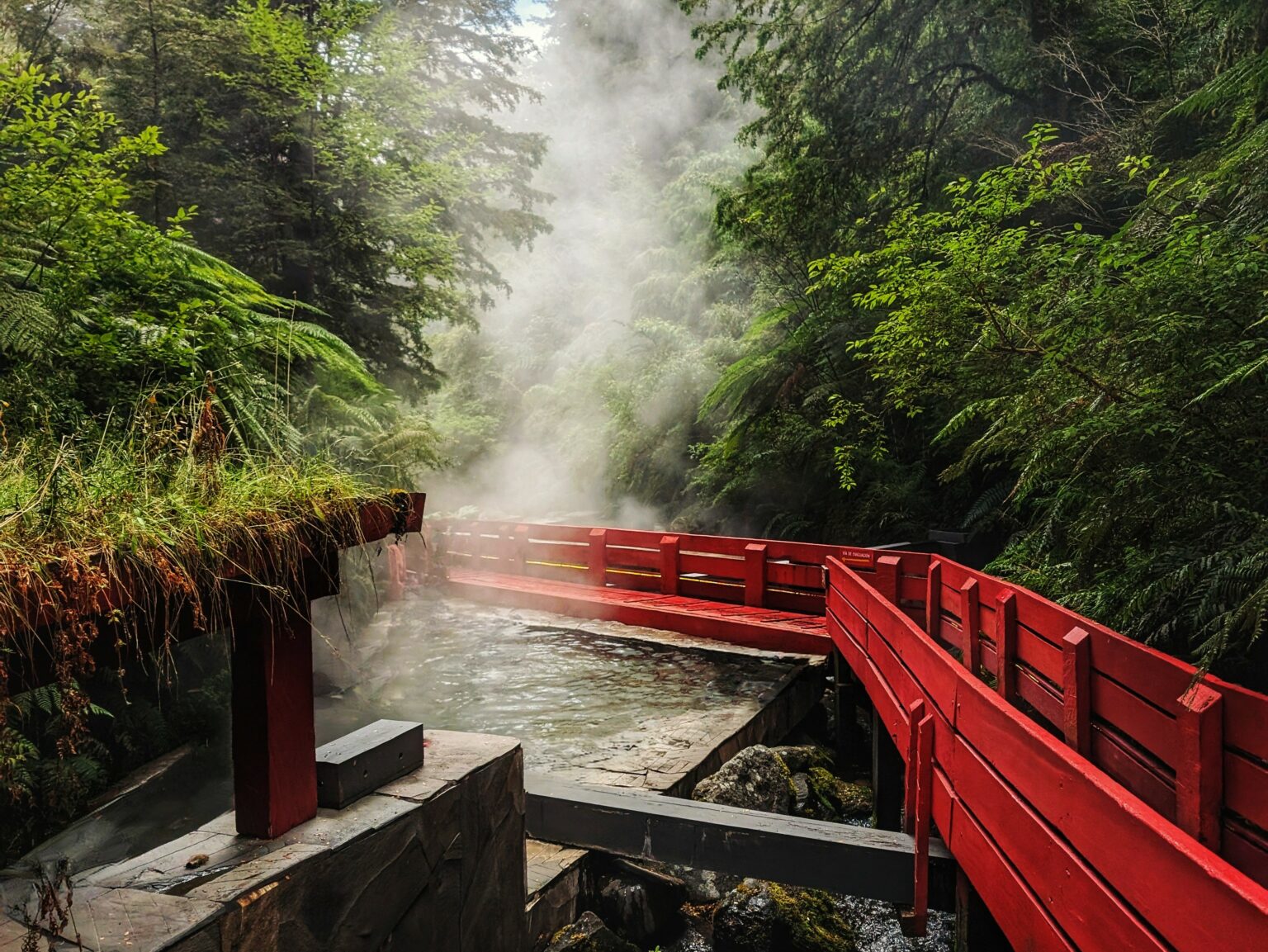There are about 100 active volcanoes in Chile, many of which are in the Northern Patagonia region of the Lakes District. To best experience volcanoes in Chile, Puerto Varas and Villarrica are two lakeside towns that are each anchored by a large volcano. These towns are quaint and full of local life in the Chilean Lake Region. They are typical Chilean vacation towns, with beaches along their lakes for the summer and access to ski resorts in the winter. It is also a great place to stop before going to the Chiloe island. You can read more about Chiloe here.
In this article, we will talk about each of these towns and where to stay. We visited these towns specifically for their views and interactions with the volcanoes in Chile, but each of these have access to typical mountain activities, such as hiking, skiing, and kayaking.
Puerto Varas
After doing the Cruce Andino, we only stayed in Puerto Varas for one night before making our way onto the next stop, but a few days would be best to make the most of the nearby beautiful natural attractions. Even if you only have one night in Puerto Varas, it is still worth it to walk through the town and explore some of the historical features that set this town apart.
The center of town has a large concentration of restaurants and cafes, with local sandwich shops and ice cream parlors. Their may be community activities taking place on the beach and and you might have the opportunity to see someone building a curanto in the beach. This meal can be sampled throughout the area and on the island of Chiloe.
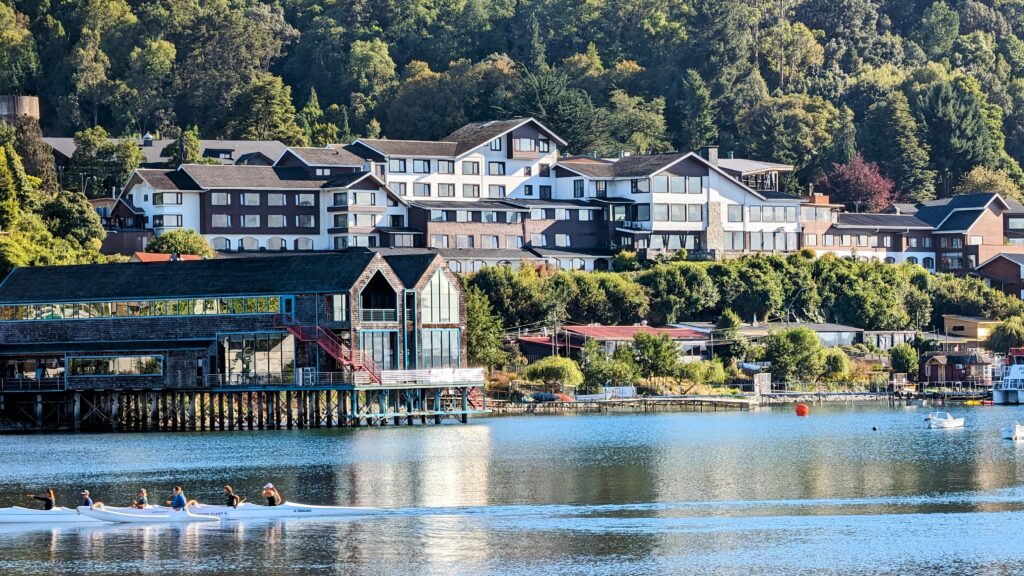
The town was a former German settlement and some of their buildings are marked as historical landmarks throughout the town. There are maps that indicate the buildings that have these designations and you can see many of them just walking through the center of town.
Where to stay in Puerto Varas
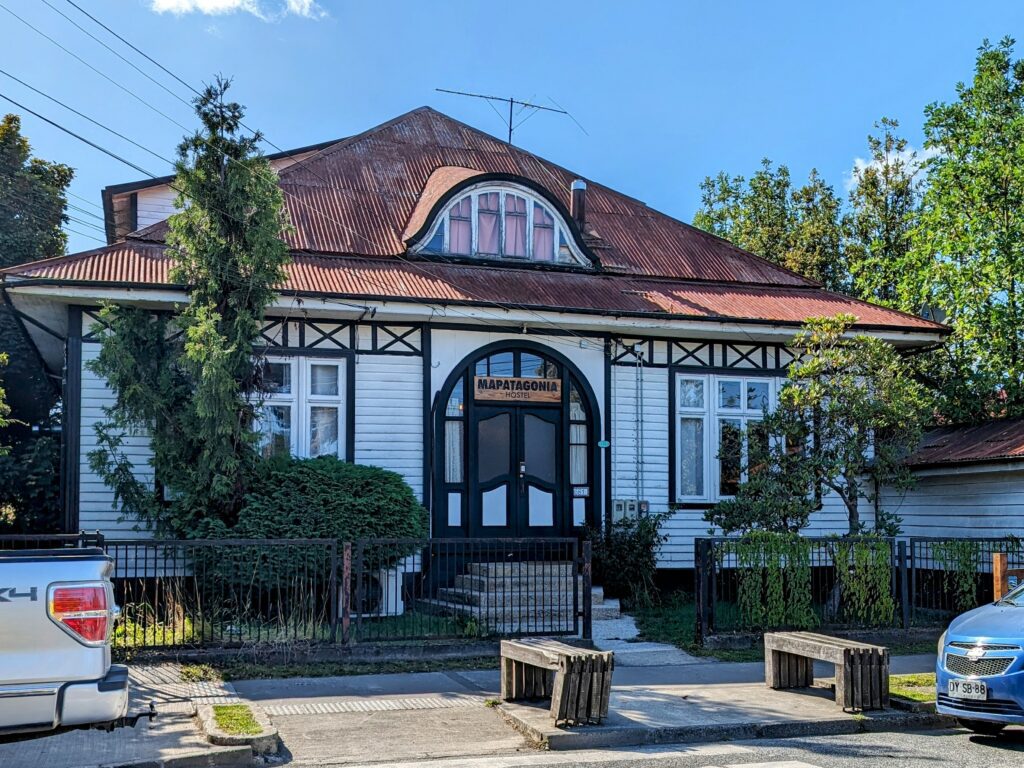
One of these historical buildings is a popular hostel, MaPatagonia. This particular hostel stood out to due to wonderful ownership, great upkeep, and comfortable individual rooms with a historic charm. They also have an outdoor soaking tub that you can pay to reserve. (You just have to give them 24-hour notice.)
The Iconic Puerto Varas Viewpoint
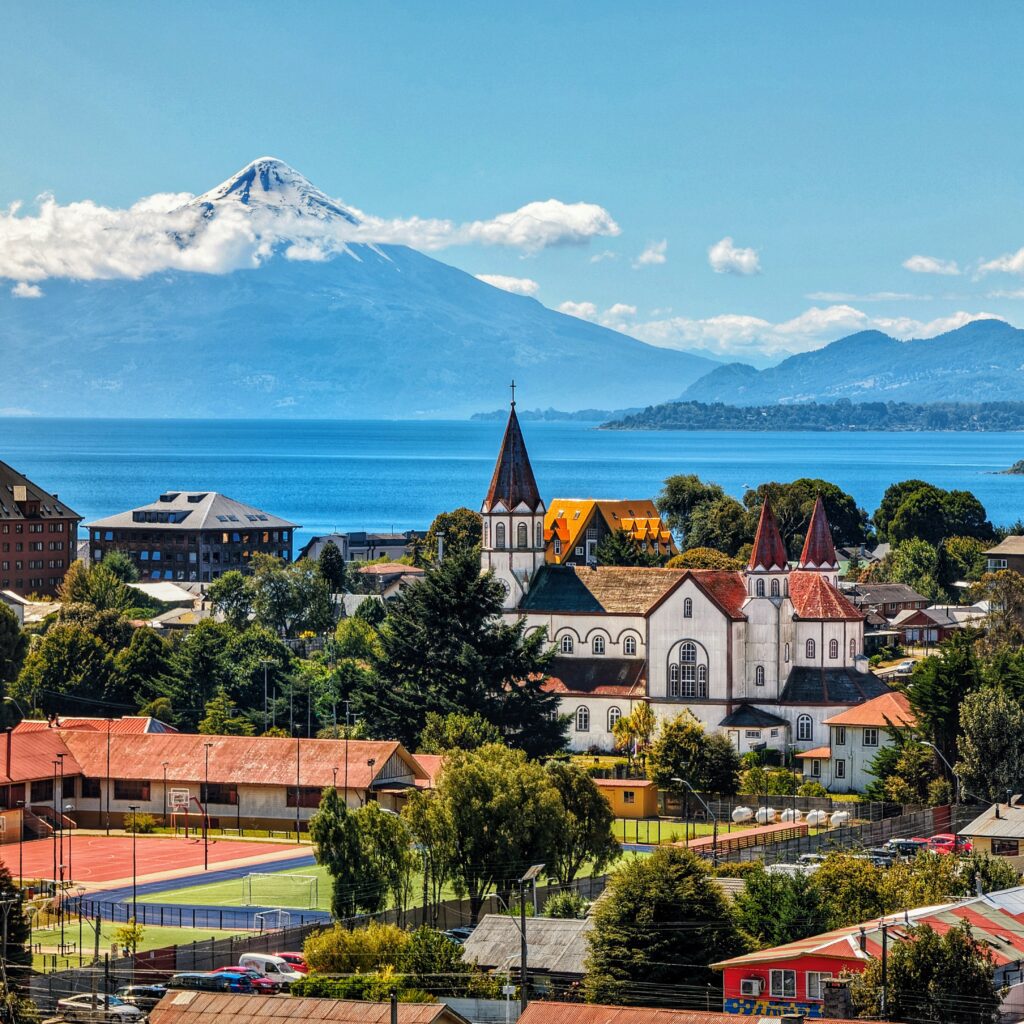
Finally, if you search Puerto Varas on Google, this image (seen above) comes up to highlight the town and the Volcano Osorno that looms over it. There is a hill in the town that you can climb to get views of the town and the volcano but it will not get you this view (despite what other blogs may say!) Yes, this photo may be one of the best views of the volcanoes in Chile. But, this particular viewpoint is near someone’s driveway and for the sake of their privacy, we will not disclose the exact location. We are not the biggest proponents of tourism just for an image either. However, the view from the hill is still great and it is best to visit it in the afternoon/evening to avoid the sun’s glare on the water and haze in the sky.
Villarrica
Villarrica is a small town in the Chilean Lake District of Patagonia, located along a lake and with an incredible view of the Villarrica Volcano, one of the many volcanoes in Chile. It is in the midst of a number of different volcanoes, making it the ideal place to relax and visit some natural hot springs.
The town has a number of different restaurants with traditional Chilean food. One highlight is Cafe-Bar 2001 with sandwiches, hot dogs (completos in Chile), french fries and great hot chocolates. It is normally bustling with Chileans and has a charming interior that makes it a must stop dining location during your stay.

The indigenous Mapuche community also has a strong presence in this community. There are artisanal markets where people from this community display and sell their craftsmanship. In addition, a ruka (traditional Mapuche home) in the center of town holds a restaurant where they sell traditional cuisine. It is a great place to support the local community and learn about the history of the area.
The Villarrica Alternative: Pucon
The other popular town in this area is Pucon but we recommend staying in Villarrica because it has nicer views of the volcano and is a laid-back Chilean town. If you are looking to just relax in this area, we recommend staying in Villarrica. Pucon has a stronger hold on international tourism and is closer to some of the adventure activities that this area has to offer. If you are looking to do some activities beyond the thermal baths, then Pucon might be the right place for you.
Where to stay in Villarrica
We recommend staying in the Bed & Breakfast in the center of Villarrica called Hostal Katemu. The hotel has accommodations that range from rooms for 2-4 people and larger cabins with kitchens. Each accommodation has a private bathroom and includes a generous breakfast of a sandwich, juice, coffee, and a sweet pastry.
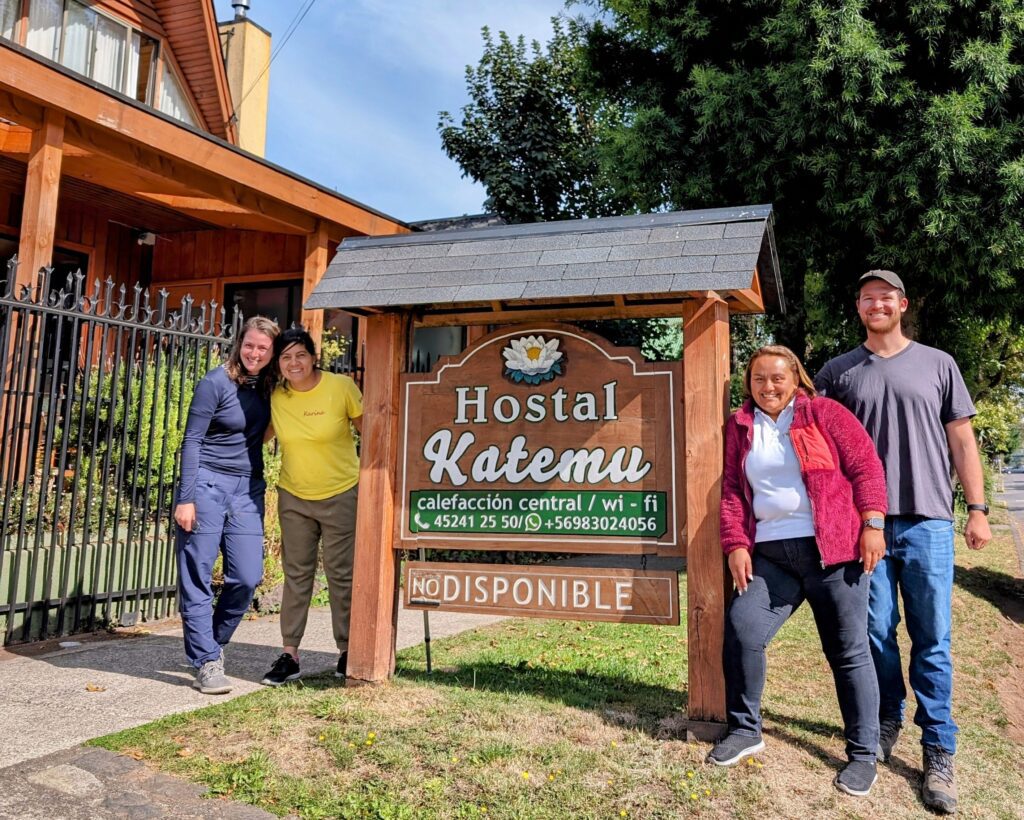
It is run by two women who are incredibly kind and generous. They can answer all your questions about the location and even help you organize your trip to the thermal baths. Overall they make your stay feel homey and if you find yourself in Villarrica, we recommend reserving this B&B here.
The Termas Geometricas
Termas Geometricas are just one of the many hot springs available to visit in this area. It is most famous for its beautiful architectural intervention and design in the a specific part of a volcano. You can use a tour group to get to the thermal baths and they can give you 3 hours to enjoy the hot springs. This tour can be reserved from one of the many tour agencies in town.
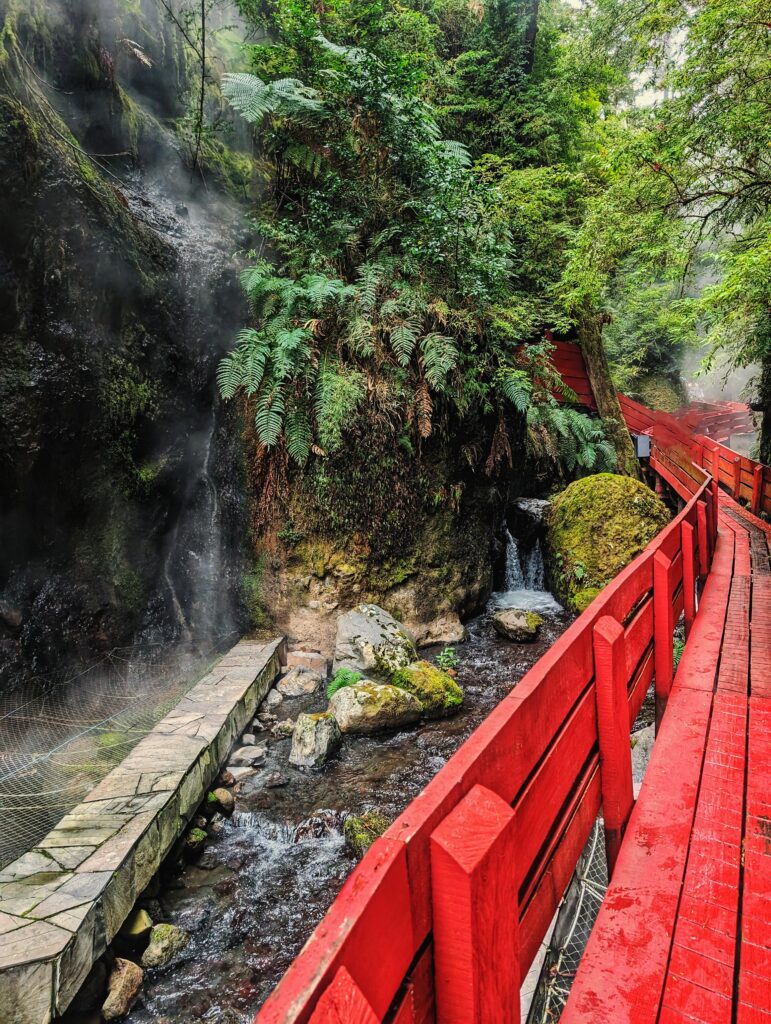
The Termas Geometricas has 17 different baths of varying size and temperature, all connected by a winding pathway. Off of the pathway are huts that hold restrooms and changing areas with lockers to store clothes. The water for the thermal baths comes directly from the volcanic ground, heated by the volcano but this water is too hot to touch. Above ground is a river that runs through the thermal baths under the red walkways. The river water comes directly from a glacier. When combining the hot water from the volcanic ground with the frigid water from the glacier at different quantities, the thermal baths create creates water at varying temperatures for the baths.
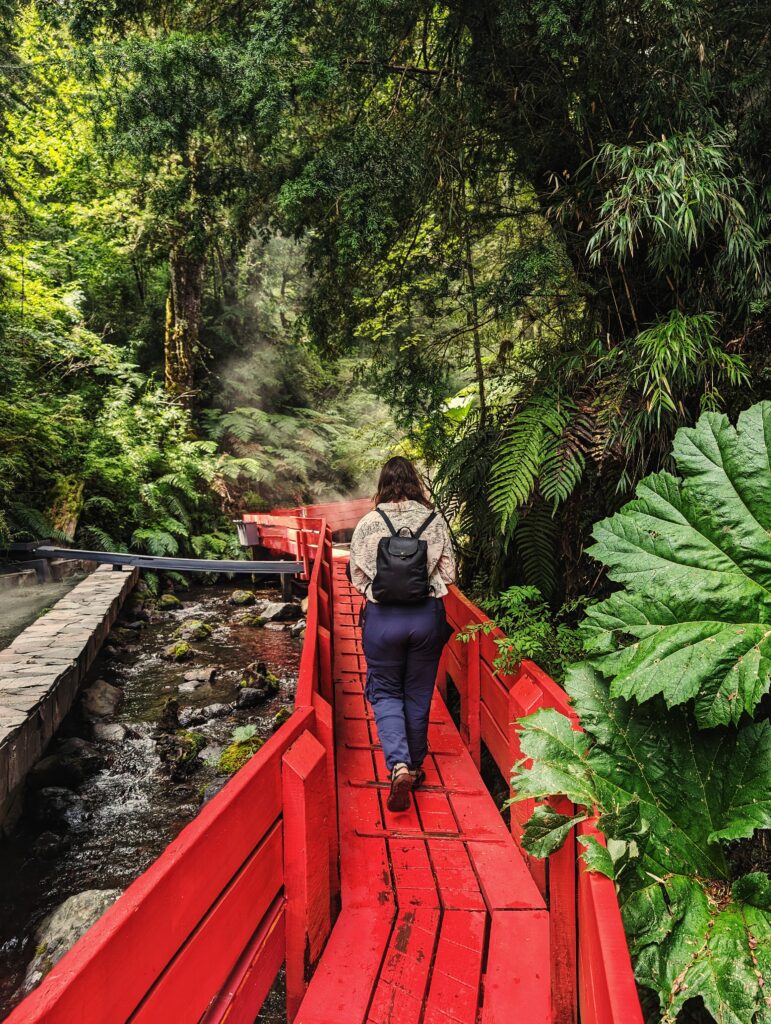
Visiting the Thermal Hot Spring
As you walk along the red winding ramp, you can discover each of these baths of varying size and temperature. The temperate baths typically have the most people in them and the hottest/coldest baths are typically empty. You can step into any of these baths and relax and rejuvenate. At the end of the winding ramp is the waterfall that feeds the cold water into the thermal baths. If you’re brave, you can go under this waterfall to feel the frigidity from the glacier.
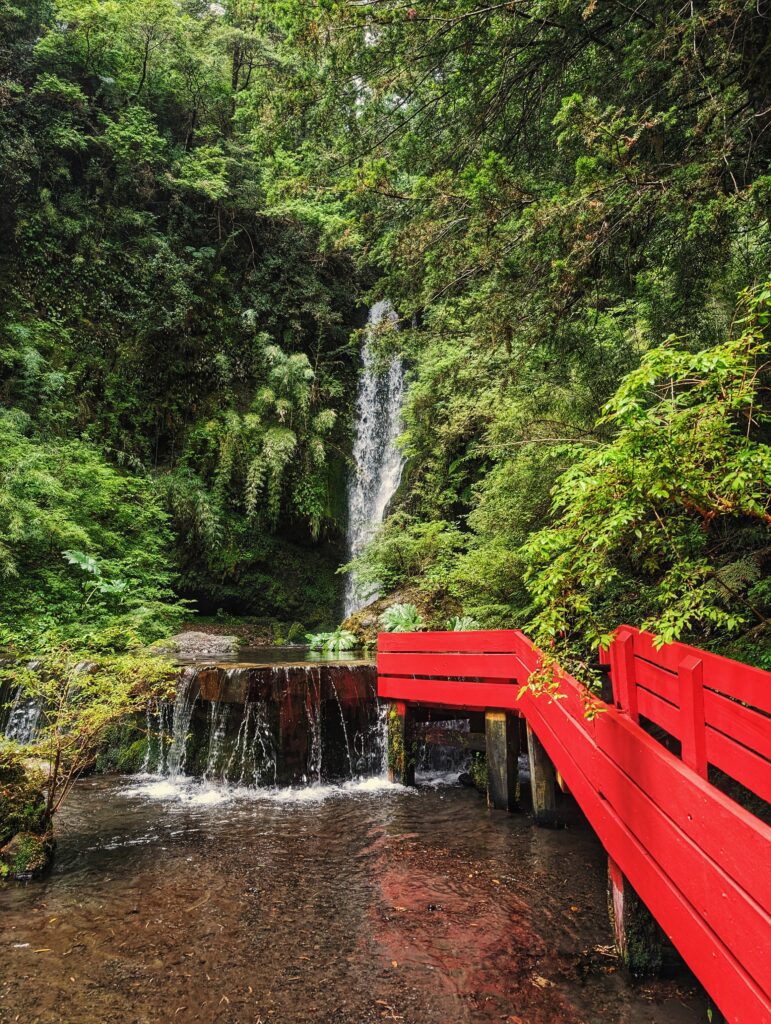
If you are done with the experience, or need to rehydrate and get some energy, there is a hut at the entrance of the thermal baths with food and drinks to enjoy. You cannot eat in the thermal baths themselves or along the walkway. It is also important to bring a water bottle to stay hydrated at the thermal baths and you can refill it directly from the glacier water or within this food location.
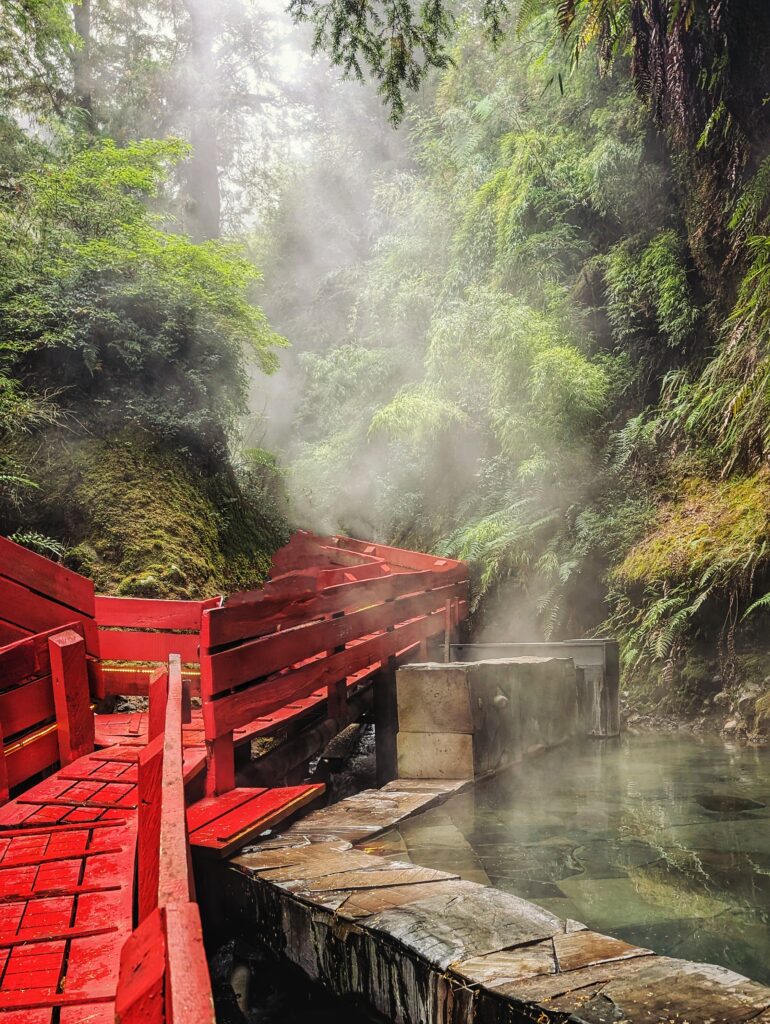
And overall, don’t forget to relax and enjoy this incredibly beautiful destination.

